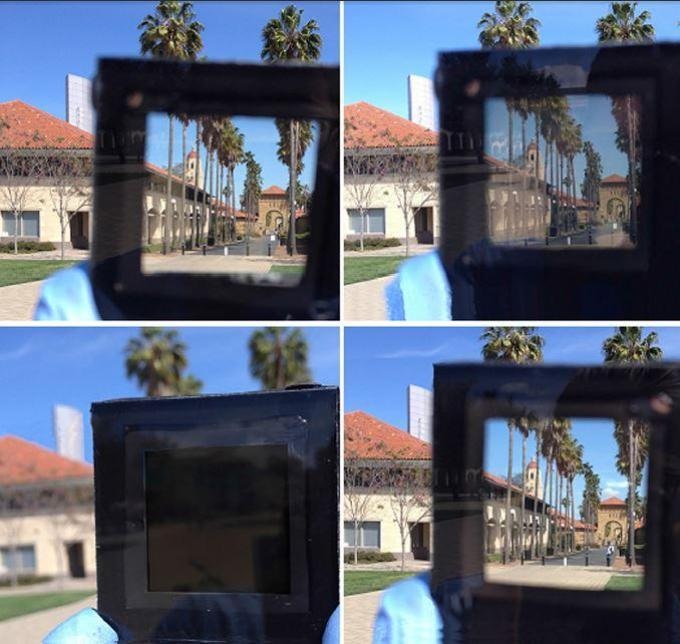Aug 10 2017
Engineers at Stanford University have created dynamic windows that can change from transparent to opaque or back again in within a minute and do not degrade over time.
The prototypes are plates of conductive glass bordered with metal ions that spread out across the surface, blocking light, in reaction to electrical current. The team recently filed a patent for the research, presented in the August 9th issue of the journal Joule, Cell Press's new publication for energy research and green technology.
 This photograph shows a smart window prototype dimming in response to electricity. This window is notable for possessing neutral color, high contrast, and excellent durability. (Credit: Barile et al./Joule 2017)
This photograph shows a smart window prototype dimming in response to electricity. This window is notable for possessing neutral color, high contrast, and excellent durability. (Credit: Barile et al./Joule 2017)
Dynamic windows are likely to transform homes, cars, businesses and more, decreasing heating and cooling costs or the requirement for blinds, but even though the technology exists, it still has to attract attention in the marketplace. Smart windows already in the market, such as those used on airlines, which are composed of materials, such as tungsten oxide, that change color when charged with electricity. But these materials are mostly expensive, have a blue tint, can take over 20 minutes to dim, and become less opaque over a period of time.
We did not tweak what was out there, we came up with a completely different solution. We've had a lot of moments where we've thought, 'how is it even possible that we've made something that works so well, so quickly,' and we're now running the technology by glass and other kinds of companies.
Michael McGehee, Senior Author, Professor of Materials Science and Engineering, Stanford University
McGehee and his team's prototype blocks light by the movement of copper and another metal in a solution over a sheet of transparent indium tin oxide altered by platinum nanoparticles. When transparent, the windows are clear and allow roughly 80% of immediate natural light through, and when dark, transmission falls to under 5%. The Researchers switched the windows on and off about 5,500 times and observed no change in the transmission of light, signifying that the design is durable.
However, there is more work to be done before scaling up. McGehee says that there is presently a restriction on how much area the prototypes can cover (the Researchers worked with 25 cm2 windows), but there are plans to look into this issue. His team also wants to iterate the metal electrodes. The goal is to lessen the cost of the prototype so that it is about half the cost of dynamic windows that are already available commercially.
We're excited because dynamic window technology has the potential to optimize the lighting in rooms or vehicles, save about 20% in heating and cooling costs, and even change the way people wear sunglasses. This is an important area that is barely being investigated at universities, and there's a lot of opportunity to keep us motivated.
Michael McGehee, Senior Author, Professor of Materials Science and Engineering, Stanford University